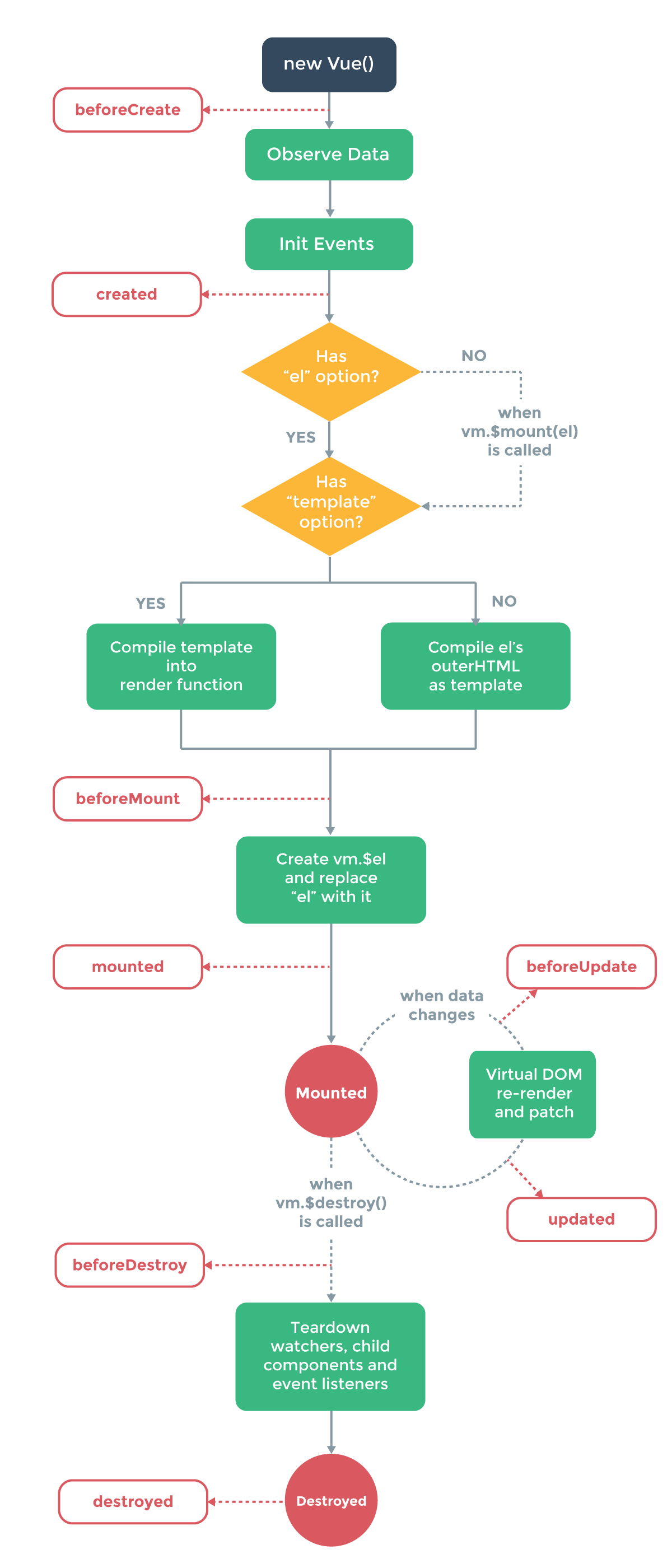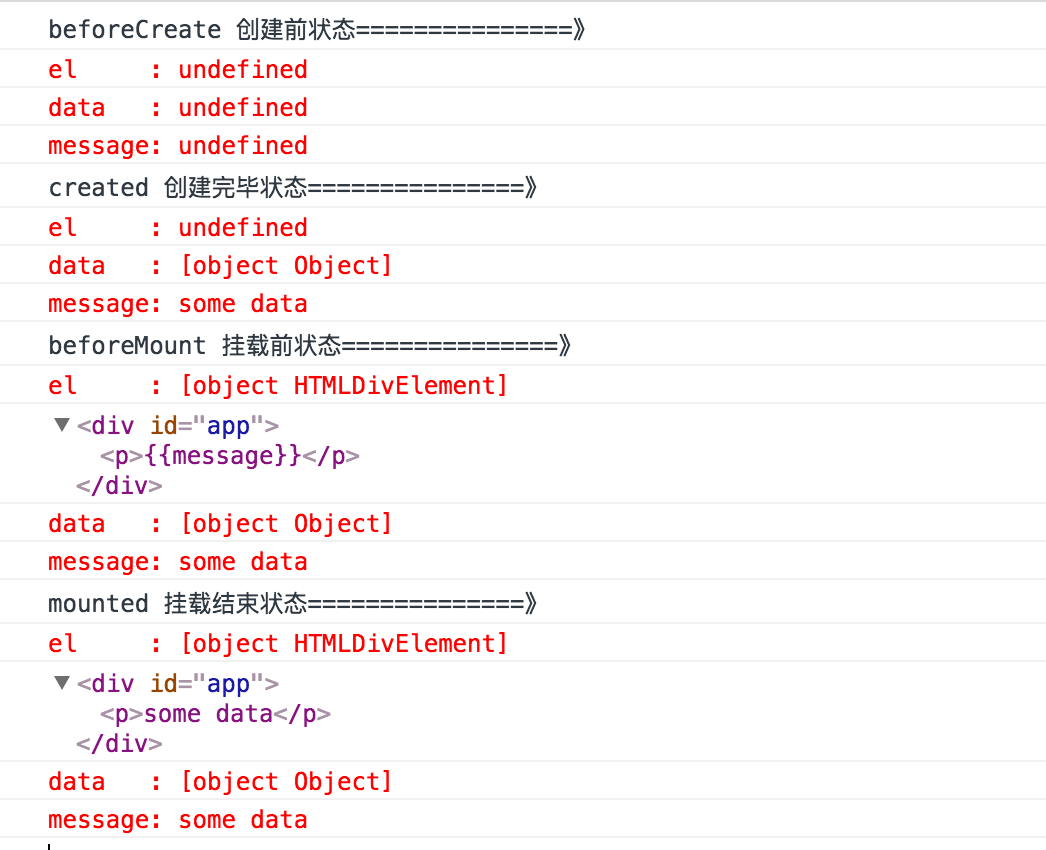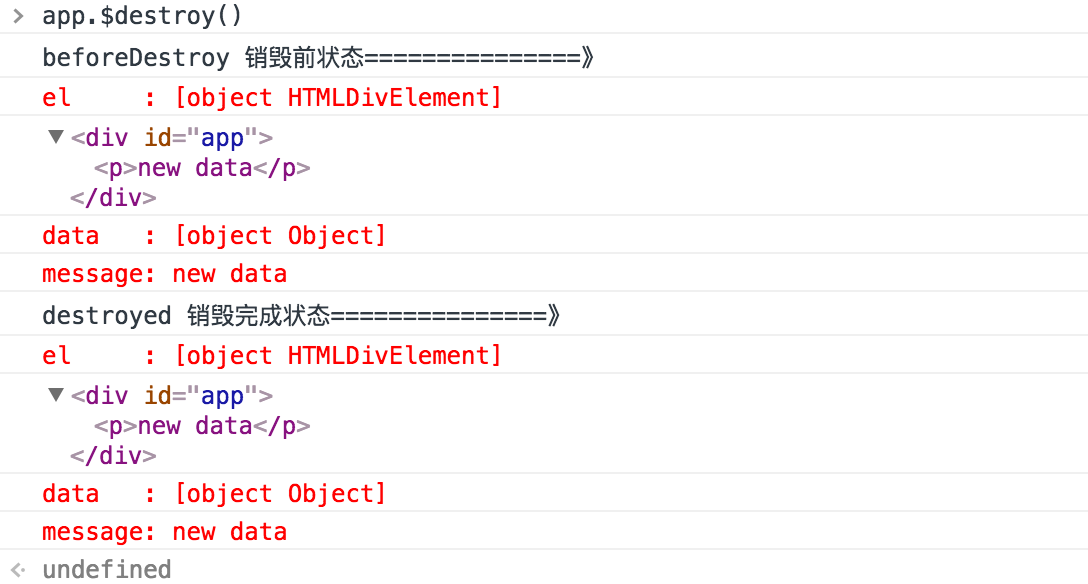vue生命周期的理解
阿新 • • 發佈:2017-07-29
log instance code 結構 images 輸入 分享 upd 對象
如下圖為Vue官網(https://cn.vuejs.org/v2/guide/instance.html#實例生命周期)給出的生命周期圖示

光看圖或許不夠直觀,接下來就是一段代碼來加強理解。
mounted方法及其之前
dom部分:
<div id="app"> <p>{{message}}</p> </div>
js部分:
<script>
var app = new Vue({
el: ‘#app‘,
data: {
message :
以上代碼的運行結果為:

從運行結果可以看出來:
在beforeCreated階段,vue實例的掛載元素$el和數據對象data都為undefined,還未初始化,
在created階段,vue實例的數據對象data有了,$el還沒有,
在beforeMount階段,vue實例的$el和data都初始化了,但還是掛載之前為虛擬的dom節點,data.message還未替換
在mounted階段,vue實例掛載完成,data.message成功渲染
update部分
在瀏覽器控制臺中輸入 app.message = "new data",會出現如下變化

可以發現,當data變化時,會觸發beforeUpdate和updated方法
destroy部分
在瀏覽器控制臺中輸入app.$destroy()

此時再繼續修改message的值,在瀏覽器控制臺輸入app.message = "change after destory",你會發現:

因此,在執行destroy方法後,對data的改變不會再觸發周期函數,說明此時vue實例已經解除了事件監聽以及和dom的綁定,但是dom結構依然存在。
vue生命周期的理解
